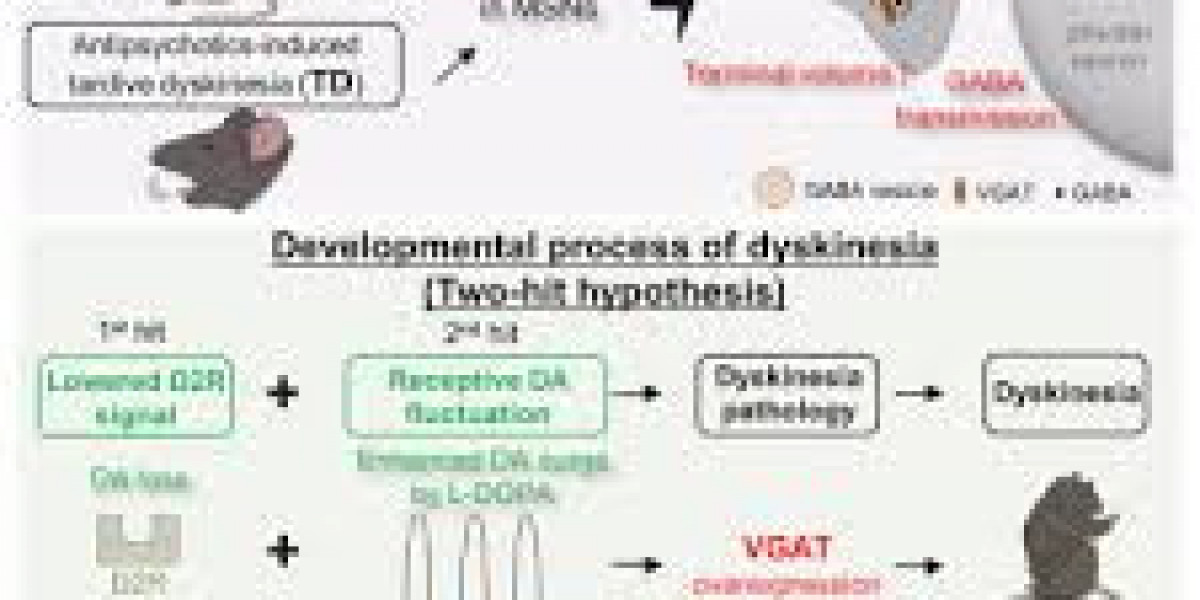Parkinson’s disease (PD) is a progressive neurodegenerative disorder characterized by motor and non-motor symptoms that significantly impact the quality of life. While the primary treatment for Parkinson’s disease involves the use of levodopa, a precursor to dopamine, other medications such as dopamine agonists are often employed to manage symptoms, particularly in the early stages of the disease. Among these, cabergoline, marketed under the brand name Dostinex, has gained attention for its off-label use in alleviating Parkinson’s symptoms. This article explores the role of cabergoline in Parkinson’s disease, its mechanism of action, dosing regimens (including 0.5 mg and 0.25 mg formulations), and its potential benefits and risks.
Understanding Parkinson’s Disease and Dopamine Agonists
Parkinson’s disease arises from the degeneration of dopamine-producing neurons in the substantia nigra, a region of the brain responsible for motor control. The resulting dopamine deficiency leads to hallmark symptoms such as tremors, rigidity, bradykinesia (slowness of movement), and postural instability. While levodopa remains the gold standard for replenishing dopamine levels, its long-term use is associated with complications such as motor fluctuations and dyskinesias.
Dopamine agonists, on the other hand, mimic the action of dopamine by directly stimulating dopamine receptors in the brain. They are often used as monotherapy in early-stage Parkinson’s disease or as adjuncts to levodopa in advanced stages. Cabergoline, a potent dopamine agonist, is one such medication that has shown promise in managing Parkinson’s symptoms, despite being primarily approved for other indications.
Cabergoline: Mechanism of Action
Cabergoline is a long-acting dopamine receptor agonist with high affinity for D2 receptors. It works by stimulating these receptors in the striatum, the brain region involved in motor control, thereby compensating for the dopamine deficiency seen in Parkinson’s disease. Unlike shorter-acting dopamine agonists, cabergoline has a prolonged half-life, allowing for once- or twice-weekly dosing, which enhances patient compliance.
The drug’s mechanism of action also extends to its ability to inhibit prolactin secretion, which is why it is primarily approved for the treatment of hyperprolactinemia. However, its dopaminergic effects make it a viable option for off-label use in Parkinson’s disease, particularly in patients who experience adverse effects with other dopamine agonists or require a more convenient dosing schedule.
Dosing Regimens: Cabergoline 0.5 mg and 0.25 mg
Cabergoline is available in two common strengths: 0.25 mg and 0.5 mg. The dosing regimen is typically individualized based on the patient’s response and tolerance. In the context of Parkinson’s disease, the following dosing strategies are often employed:
Initial Dose: Treatment usually begins with a low dose, such as cabergoline 0.25 mg once or twice a week, to minimize side effects. This allows the healthcare provider to assess the patient’s tolerance and adjust the dose accordingly.
Maintenance Dose: Depending on the patient’s response, the dose may be gradually increased. For many patients, a maintenance dose of Cabergoline 0.5 mg once or twice a week is sufficient to achieve symptom relief. However, some individuals may require higher doses, up to a maximum of 4 mg per week, divided into multiple doses.
Dostinex 0.5 mg: The Dostinex 0.5 mg formulation of cabergoline, Dositnex, is available in a 0.5 mg strength. This formulation is often preferred for its convenience and reliability in dosing.
It is important to note that cabergoline should be titrated slowly to reduce the risk of side effects, particularly orthostatic hypotension and impulse control disorders, which are common with dopamine agonists.
Efficacy of Cabergoline in Parkinson’s Disease
Several studies have demonstrated the efficacy of cabergoline in managing Parkinson’s symptoms. Its long half-life and potent dopaminergic activity make it particularly useful for patients who experience motor fluctuations with levodopa. Key benefits include:
Motor Symptom Control: Cabergoline has been shown to significantly improve motor symptoms such as tremors, rigidity, and bradykinesia. Its sustained action helps maintain stable dopamine levels, reducing the “on-off” phenomena associated with levodopa.
Reduced Levodopa Requirements: When used as an adjunct to levodopa, cabergoline can reduce the required dose of levodopa, thereby minimizing the risk of levodopa-induced dyskinesias.
Non-Motor Symptom Relief: Emerging evidence suggests that cabergoline may also improve non-motor symptoms such as depression and sleep disturbances, which are common in Parkinson’s disease.
Convenience: The once- or twice-weekly dosing schedule of Cabergoline offers a significant advantage over other dopamine agonists that require daily administration, improving adherence and quality of life for patients.
Safety and Side Effects
While cabergoline is generally well-tolerated, it is not without risks. Common side effects include:
Gastrointestinal Issues: Nausea, vomiting, and constipation are frequently reported, particularly during the initial stages of treatment.
Orthostatic Hypotension: Cabergoline can cause a drop in blood pressure upon standing, leading to dizziness or fainting. This risk is higher in elderly patients or those with pre-existing cardiovascular conditions.
Impulse Control Disorders: Like other dopamine agonists, cabergoline has been associated with impulse control disorders such as gambling, hypersexuality, and compulsive shopping. Patients and caregivers should be educated about these potential risks.
Fibrotic Reactions: Long-term use of cabergoline has been linked to fibrotic reactions, including pleural, pericardial, and retroperitoneal fibrosis. Regular monitoring, including echocardiograms and chest X-rays, is recommended for patients on long-term therapy.
Neuropsychiatric Effects: Some patients may experience hallucinations, confusion, or mood changes, particularly at higher doses.
Off-Label Use: Considerations and Controversies
The off-label use of cabergoline in Parkinson’s disease is supported by its pharmacological profile and clinical efficacy. However, its use remains controversial due to the risk of fibrotic reactions and the availability of other dopamine agonists with more established safety profiles, such as pramipexole and ropinirole.
Healthcare providers must weigh the benefits and risks of cabergoline on a case-by-case basis. Factors to consider include the patient’s age, comorbidities, and response to other treatments. For patients who tolerate Cabergoline well and derive significant symptom relief, it can be a valuable addition to their treatment regimen.
Patient Education and Counseling
Patients prescribed Cabergoline for Parkinson’s disease should receive comprehensive education about the medication, including:
Dosing Instructions: Emphasize the importance of adhering to the prescribed dosing schedule and not exceeding the recommended dose.
Side Effects: Educate patients about potential side effects and the importance of reporting any unusual symptoms, such as shortness of breath, chest pain, or changes in behavior.
Monitoring: Highlight the need for regular follow-up appointments and monitoring for fibrotic reactions.
Lifestyle Modifications: Advise patients to rise slowly from a sitting or lying position to minimize the risk of orthostatic hypotension.
Conclusion
Cabergoline, marketed as Dostinex, is a potent dopamine agonist with a unique pharmacological profile that makes it a viable option for the off-label treatment of Parkinson’s disease. Its long half-life and convenient dosing schedule offer significant advantages, particularly for patients who struggle with adherence to daily medications. However, its use must be carefully monitored due to the risk of serious side effects, including fibrotic reactions and impulse control disorders.
For patients who tolerate Cabergoline well, it can provide meaningful relief from both motor and non-motor symptoms of Parkinson’s disease, improving their overall quality of life. As with any off-label use, healthcare providers must exercise caution and ensure that patients are fully informed about the potential risks and benefits.
In the ever-evolving landscape of Parkinson’s disease treatment, cabergoline represents a valuable tool in the therapeutic arsenal, offering hope and relief to those living with this challenging condition.








